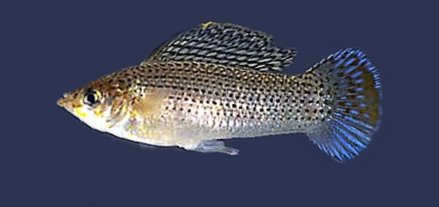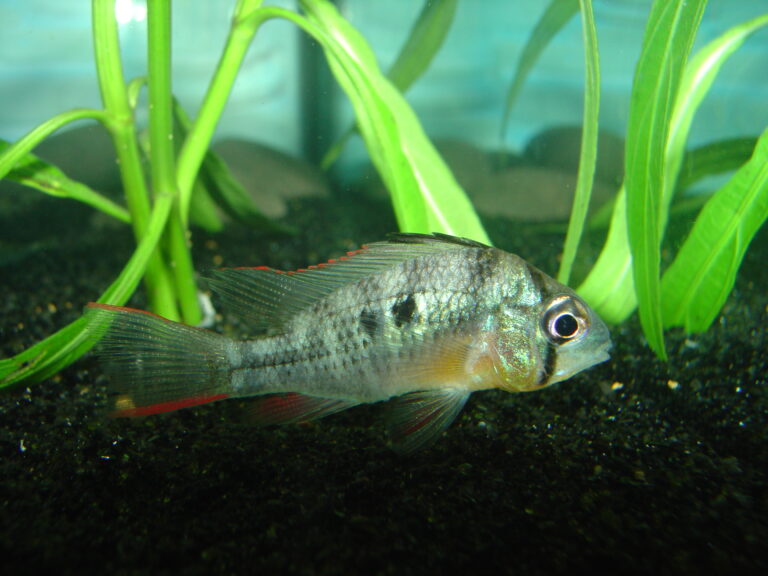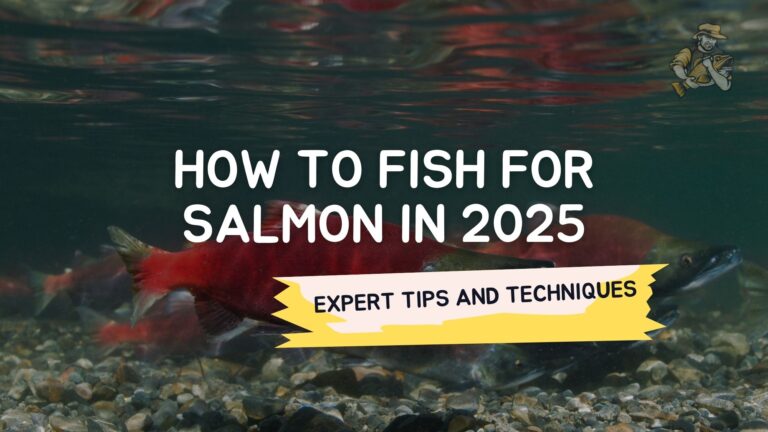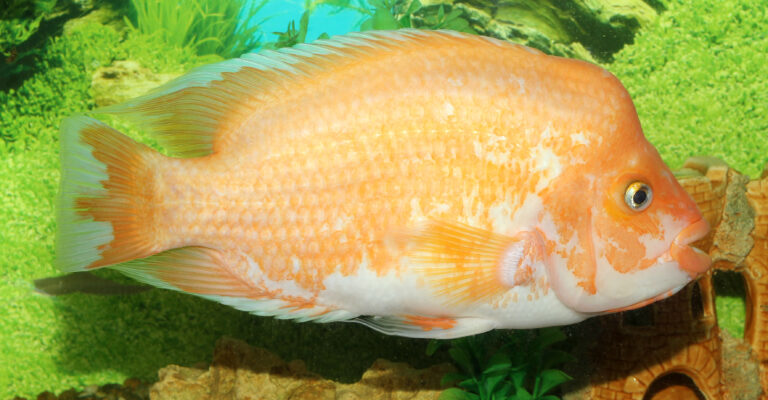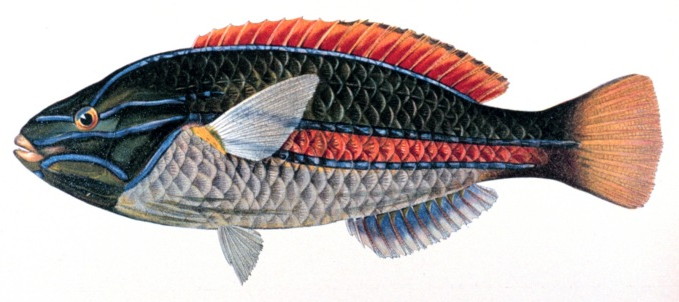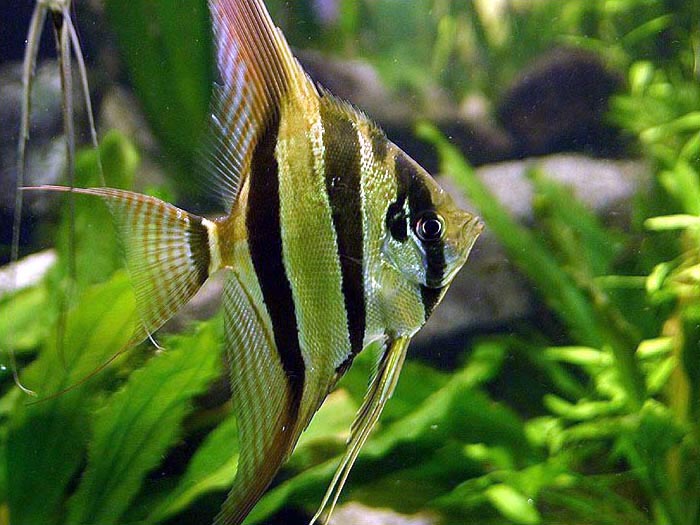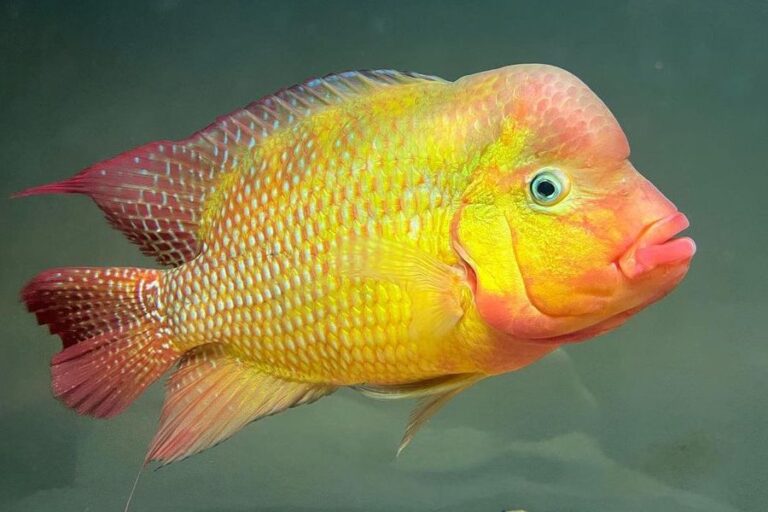What do You Need for Fishing in 2025? | Essential Gear for Beginners and Veterans
By Adam Hawthorne | Last Modified: April 26, 2025
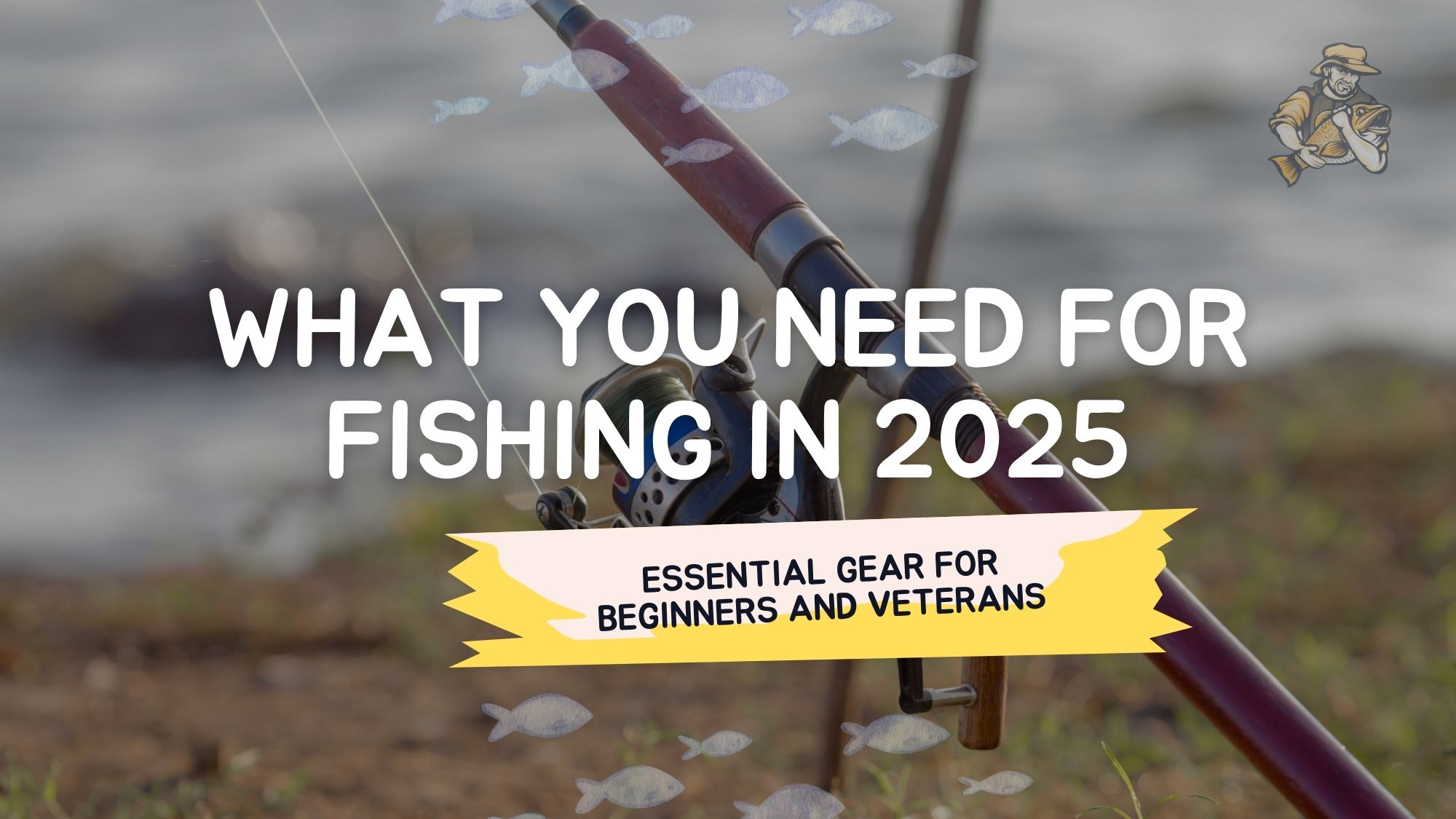
As I was organizing my tackle box last weekend for an early spring trip to Lake Michigan, I realized how much fishing gear has evolved since I first cast a line with my grandfather 30 years ago. What began as a simple rod, reel, and a handful of lures has transformed into a world of innovative equipment that makes fishing more accessible, enjoyable, and successful than ever before.
Whether you’re just starting out or looking to refresh your gear this year, I’ve put together this comprehensive guide to what you really need for fishing in 2025. Drawing from thousands of hours on the water, I’ll help you separate the essential tools from the expensive gimmicks.
What Do you need for Fishing in 2025? – Essential Gear
The foundation of any angler’s arsenal hasn’t changed much over the years, but the technology certainly has. Here’s what you need to get started or upgrade your existing setup.
Fishing Rods and Reels
I still have my grandfather’s vintage fiberglass rod hanging on my wall, but today’s options offer incredible performance at every price point. For beginners, I recommend a medium-action spinning combo that offers versatility across different fishing situations.
The 2025 market has some fantastic options that won’t break the bank:
- Entry-level: Look for composite rod and reel combos in the $50-80 range from brands like Ugly Stik or Shimano. These are surprisingly capable and will serve you well for years. The Ugly Stik GX2 Spinning Combo offers exceptional durability at an affordable price point.
- Mid-range: If you’re ready to invest a bit more, the $100-150 range opens up rods with better sensitivity and reels with smoother drag systems.
- High-end: Performance enthusiasts can explore the $200+ category with advanced carbon fiber construction and precision-engineered reels.
When I first started teaching fishing classes, I noticed many beginners were intimidated by expensive gear. Trust me when I say I’ve caught some of my biggest fish on relatively inexpensive setups. The new graphite composite rods hitting the market in 2025 offer sensitivity that would have cost hundreds more just a few years ago.
Fishing Line: More Options Than Ever
The fishing line landscape has evolved dramatically. While monofilament still has its place, newer materials offer significant advantages:
- Monofilament: Affordable, forgiving, and easy to handle for beginners. Perfect for most general fishing situations.
- Fluorocarbon: Nearly invisible underwater with excellent sensitivity. Great for clear water conditions when fish are being picky.
- Braided line: Incredibly strong for its diameter with minimal stretch. I use this when fishing around structure or for larger species.
- New eco-friendly options: Several brands have released biodegradable lines in 2024-2025 that perform well while reducing environmental impact. The American Sportfishing Association has been tracking these developments as part of their conservation initiatives.
For most beginners, I suggest starting with a quality 8-10 pound test monofilament. It offers the best balance of performance and ease of use. As you develop your skills, you can experiment with other options.
Last summer while fishing with my son Tommy, I watched him land a trophy-sized bass on an inexpensive rod spooled with basic mono line. The fish put up an incredible fight, but patience and proper technique prevailed over fancy equipment.
Essential Terminal Tackle
Your tackle box doesn’t need to be overflowing to be effective. Here’s what I consider indispensable:
- Hooks: Assorted sizes from #10 (small) to 2/0 (larger). Circle hooks are increasingly popular as they tend to hook fish in the corner of the mouth, making catch-and-release safer for the fish.
- Sinkers/weights: A variety of split shot, bullet weights, and egg sinkers will cover most situations.
- Bobbers/floats: Both classic round bobbers and slip bobbers for different fishing depths.
- Swivels: These prevent line twist and allow for quick rig changes.
The tackle industry constantly bombards us with “must-have” new items, but I’ve found these basics remain unchanged. The quality and design have improved, but the fundamental tools have stood the test of time.
Lures and Baits for 2025
While live bait remains extremely effective, the artificial lure market continues to innovate. Here’s what’s working well in 2025:
- Soft plastics: Worms, creature baits, and swimbaits in natural colors like green pumpkin, watermelon, and black/blue remain deadly effective.
- Hard baits: Crankbaits, jerkbaits, and topwater lures from brands like Rapala, Strike King, and the new entrants to the market provide realistic action.
- Spinnerbaits and buzzbaits: These attractors work great in low visibility conditions or for aggressive species.
- Micro fishing lures: With growing interest in targeting smaller species, manufacturers have expanded their micro lure selections significantly in the past few years.
The most significant development I’ve seen recently is the improvement in lure durability. Many manufacturers have addressed the common complaint of soft plastics tearing after just a few fish by developing new material compositions.
I remember spending a fortune on lures when I first got serious about fishing. Now, I find myself reaching for the same handful of proven performers 90% of the time. Don’t fall into the trap of thinking you need every color and size available.
Modern Fishing Tools and Accessories
Beyond the basics, several tools and accessories can significantly improve your fishing experience in 2025.
Essential Tools
A few key items belong in every tackle box:
- Needle-nose pliers: For removing hooks safely (for both you and the fish).
- Line cutters: Dedicated fishing scissors or nail clippers work better than teeth or pocket knives.
- First aid kit: Small cuts and hook pricks happen. Be prepared.
- Digital fish scale: Today’s compact digital scales can weigh your catch and take a quick photo simultaneously.
The tools I carry haven’t changed much over the years, though they’ve certainly become lighter and more durable. My current needle-nose pliers have a built-in line cutter that has saved me countless times when I’ve forgotten dedicated scissors.
Fishing Electronics in 2025
The biggest technological leaps in fishing have occurred in electronics. While not essential for beginners, these tools can dramatically accelerate your learning curve:
- Portable fish finders: Once expensive and complicated, entry-level castable fish finders now start around $100 and connect directly to your smartphone. The National Marine Electronics Association regularly evaluates the latest in marine technology.
- GPS units: Dedicated fishing GPS devices help you mark productive spots and navigate safely.
- Fish tracking apps: Several new apps help you record catches, identify patterns, and even connect with local fishing communities. Fishbrain has revolutionized how anglers share data and improve collective knowledge.
On a recent trip to Lake Erie, I watched a young angler outfish everyone around her using a simple castable fish finder and smartphone setup. The technology helped her locate a underwater structure that was holding walleye, while the rest of us were casting blindly. That said, electronics can’t replace experience and understanding of fish behavior—they simply provide another tool in your arsenal.
Fishing Apparel and Personal Gear
Proper clothing and personal items can make or break a fishing trip:
- Weather-appropriate clothing: Layering systems and moisture-wicking fabrics have come a long way since the cotton t-shirts I wore as a kid.
- Sun protection: A good hat, polarized sunglasses, and SPF 50+ sunscreen are non-negotiable on sunny days. The newest cooling fabrics with built-in UV protection are well worth considering.
- Footwear: Depending on your fishing style, waterproof boots, wading shoes, or non-slip boat shoes are important investments.
I learned the hard way about the importance of proper sun protection during a summer trip to the Florida Keys. Despite thinking I was adequately prepared, I ended up with a brutal sunburn that cut my tarpon fishing adventure short. Now, I’m religious about covering up, even on seemingly mild days.
Specialized Gear for Different Fishing Styles
Different fishing approaches require specialized equipment. Here’s a breakdown of some popular methods and what you’ll need.
Bass Fishing Essentials
Bass fishing continues to dominate the freshwater scene, and the gear reflects this popularity:
- Baitcasting setups: More precise casting and better control for experienced anglers.
- Specialized lures: The bass lure market continues to innovate with new soft plastics, topwater, and finesse presentations.
- Terminal tackle: Offset hooks, tungsten weights, and specialized sinkers designed specifically for bass techniques.
Bass fishing was my gateway into serious angling, and I’ve watched the explosion of specialized gear over the past decade. While it’s easy to get overwhelmed, starting with a simple Texas rig setup and a few proven lures will put fish in the boat while you learn.
Fly Fishing Setup
Fly fishing remains one of the most rewarding and artistic forms of angling:
- Fly rods: Available in various weights (typically 3-weight for small streams to 8-weight for larger water and species).
- Reels: Simpler than spinning reels but essential for line management and fighting fish.
- Lines and leaders: Floating, sinking, and intermediate lines for different water columns, plus tapered leaders and tippet material.
- Flies: Dry flies, nymphs, streamers, and emergers to match local insect hatches and baitfish.
My introduction to fly fishing on Michigan’s Au Sable River was humbling but addictive. I suggest beginners invest in a 5-weight rod as a versatile starting point and consider taking a lesson from a certified instructor. The new generation of affordable fly fishing starter kits has made this once-exclusive sport much more accessible.
Ice Fishing Equipment
For those in colder climates, ice fishing requires specialized gear:
- Ice augers: Hand, propane, or electric models for creating fishing holes.
- Shelters: From flip-over styles to hub designs, modern ice shelters are lightweight and quick to set up.
- Short rods: Specialized ice fishing rods designed for fishing through a small hole.
- Electronics: Ice-specific fish finders help locate suspended fish under the hard water.
During a memorable Quebec ice fishing trip with my father-in-law, I gained a new appreciation for modern ice fishing equipment. The portable shelters, efficient heaters, and sensitive electronics transformed what was once a test of endurance into a comfortable and productive winter activity. For those interested in the science behind ice fishing, In-Fisherman offers fascinating research on fish behavior under ice.
Budget-Friendly Fishing in 2025
One of my core beliefs is that fishing should be accessible to everyone, regardless of budget. Here’s how to get started without breaking the bank:
Entry-Level Complete Setups
Many manufacturers offer comprehensive starter kits that include everything you need:
- Rod, reel, and pre-spooled line
- Basic tackle selection
- Simple tackle box
- Fundamental accessories
These kits typically range from $50-100 and provide everything a beginner needs to start catching fish. While they may not offer the performance of specialized equipment, they’re more than capable of providing a positive introduction to the sport.
I still have a $12 yard-sale rod that has landed some impressive fish over the years. During a family weekend at Lake Michigan a few years back, I caught a trophy-sized smallmouth bass on that rod while my expensive gear sat in the truck. It’s a reminder that fundamentals and location often matter more than equipment.
Where to Save vs. Where to Splurge
If you’re building your kit piece by piece, here’s my advice on allocating your budget:
Save on:
- Tackle box/bag: A simple organization system works fine to start.
- Basic terminal tackle: Hooks, sinkers, and bobbers are relatively similar across price points.
- Some lures: Particularly soft plastics, where budget options can be very effective.
Splurge (relatively) on:
- Rod and reel: This is your connection to the fish. Even moving from a $30 to $60 combo can dramatically improve sensitivity and durability.
- Line: Good quality line prevents frustrating breaks and tangles.
- Pliers and tools: Quality tools last longer and work better when you need them most.
Environmental Considerations for Modern Anglers
Fishing in 2025 comes with growing awareness of our impact on aquatic environments. Here’s how to gear up responsibly:
Sustainable Fishing Products
The industry has responded to environmental concerns with more sustainable options:
- Lead-free weights: Tungsten, steel, and other alternatives reduce toxic metal in waterways.
- Biodegradable soft plastics: New formulations break down naturally if lost in the water.
- Recycled materials: Everything from rods to tackle boxes now comes in options made from recycled materials.
During my time fishing in Alaska, I witnessed firsthand how sustainable fishing practices can preserve fisheries for generations. The Alaska Department of Fish and Game maintains some of the world’s most effective sustainable fishery management programs. Since then, I’ve gradually transitioned most of my terminal tackle to eco-friendly alternatives and noticed no decrease in effectiveness.
Catch and Release Equipment
For those practicing catch and release, specialized equipment improves fish survival rates:
- Rubber or knotless mesh nets: Minimize damage to fish slime coat and scales.
- Barbless hooks or easily compressed barbs: Make hook removal faster and less traumatic.
- Quick-release tools: Allow hook removal without handling the fish in some cases.
I’ve become increasingly mindful of proper fish handling over the years. A particularly meaningful experience came when teaching my children to fish—watching them carefully release their catches and understand the importance of conservation created a sense of stewardship I hope they’ll carry throughout their lives. Organizations like Keep Fish Wet are conducting groundbreaking research on best practices for catch and release that dramatically improve fish survival rates.
Fishing Technology Trends in 2025
The fishing industry continues to innovate at an impressive pace. Here are some noteworthy trends:
Smart Fishing Tech
Connectivity and data are transforming the fishing experience:
- Connected rods: Sensors that record casting data and fish strikes to help improve technique.
- Environmental sensors: Devices that track water temperature, clarity, and other conditions to identify patterns.
- Community fishing apps: Programs that combine catch data across users to identify hot spots and effective techniques.
While fishing will always be about connecting with nature, these technological advances can help shorten the learning curve and improve conservation through better data collection. I recently used a water temperature sensor that syncs with my phone to identify a thermocline on Lake Michigan, which led directly to finding a school of suspended lake trout.
Sustainability Innovations
The industry is addressing environmental concerns through product innovation:
- Solar-powered electronics: Reducing battery waste while keeping devices charged.
- Plant-based fishing products: From biodegradable lines to plant-derived plastic alternatives.
- Recycling programs: Several major manufacturers now offer recycling for old line, soft plastics, and even broken rods.
As someone who’s witnessed changes in fish populations and water quality over decades of fishing, I’m encouraged by these developments. The fishing industry is increasingly recognizing that its future depends on healthy aquatic ecosystems.
FAQ: Common Questions About Fishing Gear in 2025
What’s the absolute minimum gear I need to start fishing?
At the bare minimum, you need a fishing rod and reel combo, fishing line, hooks, weights, bait or lures, and a valid fishing license. Most states have specific licensing requirements you can find through the U.S. Fish & Wildlife Service state directory. I recommend adding pliers for safe hook removal and a small tackle box for organization. This minimal setup can be assembled for under $100 and will catch fish in most environments.
Are expensive fishing rods worth the money?
For beginners, the difference between a $40 rod and a $400 rod won’t significantly impact success. As you develop skills and sensitivity, higher-end equipment offers benefits in weight, sensitivity, and specialized actions. I suggest starting affordable and upgrading selectively as you identify specific needs based on your fishing style.
What’s the best fishing line for beginners?
Monofilament line in the 8-10 pound test range offers the best combination of strength, visibility, and forgiveness for most beginners. It’s easy to tie knots with, relatively inexpensive, and works well for a wide variety of freshwater species. As your skills develop, you can explore fluorocarbon and braided options for specific situations.
How important are fishing electronics for beginners?
While not essential, even basic electronics can dramatically accelerate your learning curve. A simple fish finder shows underwater structure and fish location, helping you understand where fish hold and why. Many anglers fish successfully for decades without electronics, but they’re becoming increasingly affordable and user-friendly options for those interested.
Should I buy fishing-specific clothing?
Specialized fishing apparel offers real benefits in sun protection, moisture management, and functionality (like built-in tool holders and ventilation). However, beginners can start with comfortable outdoor clothing they already own. The most important items are polarized sunglasses to reduce glare and see into the water, and appropriate footwear for your fishing environment.
How do I maintain my fishing gear to make it last?
Regular maintenance extends the life of your equipment significantly. Rinse rods and reels with fresh water after use, especially in saltwater. Apply reel oil according to manufacturer recommendations. Store gear out of direct sunlight in a temperature-controlled environment when possible. Replace line regularly (typically once or twice per season for active anglers).
What’s the best all-around fishing lure for beginners?
If I could only recommend one lure type for beginners, it would be a 4-inch soft plastic worm in a natural color (green pumpkin or watermelon) rigged on a 1/0, 2/0, or 3/0 hook with a size-appropriate bullet weight. This simple Texas rig catches fish year-round in almost any freshwater environment and is relatively snag-resistant.
Conclusion: Finding Your Perfect Fishing Setup
After three decades of fishing everything from small farm ponds to expansive Great Lakes waters, I’ve learned that the perfect fishing setup is highly personal. While this guide covers the essentials and nice-to-haves for 2025, the most important factors are your specific fishing environment, target species, and personal preferences.
Start with versatile, quality basics and expand your collection as you identify needs and preferences through experience. Remember that fishing is about the connection with nature and the learning process—not just having the latest gear.
I’d love to hear about your essential fishing gear or answer specific questions about setting up for your local fishing environment. Drop a comment below or share your own “can’t live without it” fishing gear recommendations with our community.

Meet Adam Hawthorne
I’m a lifelong fishing enthusiast who’s spent years exploring rivers, lakes, and oceans with a rod in hand. At Fishing Titan, I share hands-on tips, honest gear reviews, and everything I’ve learned about fish and ocean life, so you can fish smarter and enjoy every cast.
Share:

Meet Adam Hawthorne
I’m a lifelong fishing enthusiast who’s spent years exploring rivers, lakes, and oceans with a rod in hand. At Fishing Titan, I share hands-on tips, honest gear reviews, and everything I’ve learned about fish and ocean life, so you can fish smarter and enjoy every cast.
Related Articles
-
Sailfin Molly
The Sailfin Molly stands as one of the most distinctive freshwater fish species in both wild ecosystems and aquarium environments. Known scientifically as *Poecilia latipinna*,…
-
Bolivian Ram
The Bolivian Ram (Mikrogeophagus altispinosus) stands as one of South America’s most captivating cichlid species, representing a prime example of adaptive evolution within the diverse…
-
How to Fish for Salmon in 2025: Expert Tips and Techniques
Few fishing experiences match the thrill of feeling a salmon take your line. These powerful fish have captivated anglers for generations, and with good reason….
-
Midas Cichlid
The Midas Cichlid (Amphilophus citrinellus) stands as one of Central America’s most recognizable and ecologically significant freshwater fish species. This robust cichlid commands attention through…
Fish Species
-
Rainbowfish
Rainbowfish represent one of the most visually striking and ecologically significant groups of freshwater fish found across Australia, New Guinea, and Indonesia. These vibrant schooling…
-
Angelfish
Angelfish represent one of the most recognizable and ecologically significant families of marine fish, encompassing over 85 species distributed across tropical and subtropical oceans worldwide….
-
Red Devil Cichlid
The Red Devil Cichlid stands as one of Central America’s most formidable and captivating freshwater predators, renowned for its striking crimson coloration and aggressive territorial…
-
Caribbean Reef Shark
The Caribbean Reef Shark (*Carcharhinus perezi*) stands as one of the most recognizable and ecologically significant predators patrolling the warm waters of the western Atlantic…

